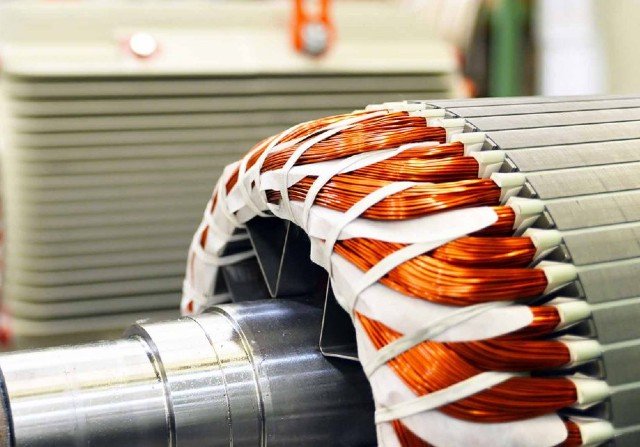Electric motors use a series of wires to direct the flow of current that enables them to operate. These wires are made from conductive materials and are layered or laminated around the motor’s magnetic core. They are more commonly referred to as windings and they must be carefully protected for the motor to function reliably and ensure a long operational life.
When purchasing motors from an electric motor manufacturer you may be given a choice of various types of winding insulation, while some manufacturers will only offer one type. To make the right choice for your application, it’s advantageous to know what motor insulation consists of, the purpose it serves, and what type you’ll need.
What Does Motor Winding Insulation Do?
Motor insulation is a special coating or encapsulation that seals the windings and also stabilizes them to increase their rigidity. The coating also prevents contamination from dust, debris, and particles, and helps guard against electrical shorts. Some motor insulation will also function as a heat reduction element, which can be very effective at drawing heat away from the stator and reducing the operational temperature of the motor.
Varnish As Motor Insulation
Varnish is a relatively common type of insulation in motors. Many electronic motor parts manufacturers offer it as a standard. It is typically applied through a dip and bake technique, in which the motor windings are dripped into liquid epoxy varnish and then cured using heat. This process is ideally repeated in two full cycles to ensure thorough coverage of all windings, with the second cycle being completed after the first coat has cooled completely.
As an alternative to dip and bake varnishing, a trickle varnishing method may be used. In this technique, the windings are heated through electrical resistance. Once they reach the correct temperature, the varnish is slowly applied until all of the windings are fully saturated. The heated windings will cause the varnish to cure as it’s being applied, making it a very efficient method.
Whether applied through either technique, varnish insulation is sufficient for most standard-duty motors. Many motor manufacturers use this type of insulation in their products since it’s economical and doesn’t require as many equipment capabilities as encapsulation that utilizes vacuum impregnation or denser resins. However, if a high-performance motor is needed, or if a motor needs to be used in a system that might be subject to high heat, moisture, dirt, or other more challenging circumstances, varnish insulation may not be enough protection.
High-Performance Encapsulation And Potted Coil Insulation
Encapsulated windings are coated with varnish or resin and cured through special processes, which can include vacuum pressure tank curing. Compared to standard varnish insulation methods, vacuum impregnation allows for a more thorough saturation of the windings, which means they are better protected.
Potted coil insulation is one of the best options for creating a highly resistant motor. It not only exceeds the endurance capacity of standard varnish coatings, it can be a reliable solution for motors that must operate in higher temperature settings or in environments where dirt, debris, or moisture would likely interfere with operation. When paired with the right housing, this type of encapsulation also draws thermal energy away from the stator and reduces the motor’s operational temperature.
High-performance encapsulation requires a more time-consuming and specialized process. Not all DC and AC motor manufacturers will offer this option, but those that cater to aerospace, defense, and heavy industrial markets will be more likely to provide motors with potted coils and high-endurance encapsulation.
If you need a motor that must have extended endurance capacities or that will need to operate in very hot or dirty environments, high-performance encapsulation is a worthwhile addition. If the motor will be used in fairly standard settings, conventional varnish insulation will usually be satisfactory.



